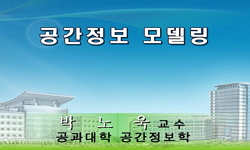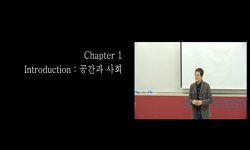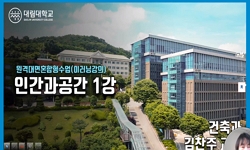역사적 건축물은 시대에 따라, 다양한 모습과 형태를 갖추면서 변화하여 왔다. 문화재의 元形1)을 언급하거나 건축물을 수리할 때에는, 역사적 변화과정을 감안하여, 각 시대의 흔적이 유지...
http://chineseinput.net/에서 pinyin(병음)방식으로 중국어를 변환할 수 있습니다.
변환된 중국어를 복사하여 사용하시면 됩니다.
- 中文 을 입력하시려면 zhongwen을 입력하시고 space를누르시면됩니다.
- 北京 을 입력하시려면 beijing을 입력하시고 space를 누르시면 됩니다.
https://www.riss.kr/link?id=A100574667
- 저자
- 발행기관
- 학술지명
- 권호사항
-
발행연도
2012
-
작성언어
Korean
- 주제어
-
등재정보
KCI등재
-
자료형태
학술저널
-
수록면
147-186(40쪽)
-
KCI 피인용횟수
0
- 제공처
-
0
상세조회 -
0
다운로드
부가정보
국문 초록 (Abstract)
역사적 건축물은 시대에 따라, 다양한 모습과 형태를 갖추면서 변화하여 왔다. 문화재의 元形1)을 언급하거나 건축물을 수리할 때에는, 역사적 변화과정을 감안하여, 각 시대의 흔적이 유지되도록 하되, 완전성과 진정성을 고려하는 것이 중요하다. 향교는 고려시대부터 존재하여 온 대표적인 조선시대 건축이다. 이에 대한 연구는 다양한 시각에서 이루어져 왔으나, 대부분 현존하는 형태와 공간에 대한 유형학적 연구에 그쳤으며, 이의 원형과 변화 과정에 대한 고찰은 부족했다. 본 연구에서는 조선시대 전반에 걸친 문헌자료를 근거로 현존향교의 공간 구성이 ‘어떠한 과정을 거쳐 현재와 같이 정형화하였는가’에 대하여 고찰하여, 내재된 공간 구성의 기본 원칙과 변화과정을 체계적으로 살펴보고자 하였으며, 그 결과는 다음과 같다. 첫째, 문헌에 나타난 조선 전기(1530년대) 향교는 328개이며, 과반수인 65.6%의 향교가 邑治의 동쪽과 북쪽에 입지하였고, 읍치와의 거리는 5리 미만이 86.9%였다. 향교의 입지는 개인 주택, 사찰터 등을 사용하기도 하였으며, 경치가 좋은 곳에 자리하기도하였다. 좌향은 기본적으로 남향을 선택하였으며, 이는 조선 중기 이후에 향교 입지 선정의 기본 원칙으로 자리 잡았다. 둘째, 대성전을 중심으로 한 제향영역과, 명륜당을 중심으로 한강학영역은, 조선 전기 향교에서 하나의 공간에 존재하고 있었고, 조선 전기를 거치면서 현재와 같이 구분되었다. 특히 명륜당은 조선 전기를 거치면서 향교의 구성 요소로 자리하게 되었으며, 조선중기에 창건되는 경우도 있었다. 셋째, 두 영역은 전후 관계에 따라 소위 ‘前廟後學’과 ‘前學後廟’, 두 가지 유형의 배치로 구분된다. 後者는 이미 중국 宋代 지방 향교 배치에 적용되고 있어, 이러한 배치는 지방 향교가 갖는 보편적 배치 형태였음을 알 수 있다. 넷째, 開城 成均館2)이 후자의 배치를 갖고 있는 반면, 서울 成均館이 전자의 배치를 갖게 된 배경은, 서울 성균관이 유교적 예법을 강조하였기 때문이었을 것으로 추정된다. 서울 성균관과 같은 배치를 갖고 있는 전주와 경주의 향교는 이를 모방하여 건립되었음이 확인되었다. 다섯째, 경상도에 위치한 자인향교의 경우 조선 초 선산의 해평향교, 강릉의 연곡향교의 예에 따라 건립한 기록이 있어 경우에 따라 타 향교를 모방하였음을 확인하였다. 여섯째, 명륜당은 15c까지도 일반 향교에 보편화되지 못했으며, 이것이 제도화되어 정착되는 시기는 16c전후이다. 조선 후기에는 건물 간 배치 관계가 명확해졌고, 소위 ‘上殿下堂’의 원칙이 완성되었다.
다국어 초록 (Multilingual Abstract)
Historic buildings, depending on the era, while equipped with a variety of looks and shapes have changed. So, whenever we mentioned about its original68) form or repair it, under consideration of its historical process of change, we should pay attenti...
Historic buildings, depending on the era, while equipped with a variety of looks and shapes have changed. So, whenever we mentioned about its original68) form or repair it, under consideration of its historical process of change, we should pay attention to keep its traces of each periods and also consider its totality and authenticity. Hyang-gyo69) has existed since the Goryeo Dynasty(A.D. 918-1392) and it is a representative architecture of the Joseon Dynasty(A.D. 1392-1910). And researches about it has been made from a various viewpoints. But most in cases, it concentrated on its typological research on form and space of present state. And there was the lack of consideration for the originality and the process of change. In this study, based on literatures throughout the Joseon Dynasty, I have considered the process of change of the spatial configuration of current Hyang-gyo architecture. By this, I tried to examine systematically the spatial configuration of the basic principles and processes of change inherent. The results are as follows. The First, the number of Hyang-gyo of the early Joseon period(A.D.1530s) in the literature are 328. More than half of them are located eastern and northern area of village or city. And 86.9% of them are located within 2km``s distances. In some cases, Hyang-gyo located on past-residence or past-temple site, and basically they were set southward. The second, the shrine zone centered by Dae-sung-jeon and the school zone centered by Myung-ryun-dang was originally existed in one space in case of beginning period of Joseon Dynasty. And they divide into two zones during former term of Joseon Dynasty. Especially, Myung-ryun-dang start to exist during former term of Joseon Dynasty and in some cases, it was build first during medium term of Joseon Dynasty. The third, these two zones would be layout as two types. The one is front-shrine and rear-school and the other is front-school and rear-shrine. As the layout of the latter was already adopted in Chinese local Hyang-gyo during Song dynasty(A.D. 960-1279), so this type of layout could be a typical one in hyang-gyo. In case of the former layout, it was the unique one of Joseon dynasty. The forth, there are two Sung-kyun-kwan which are the top educational institutions in Goryeo and Joseon dynasty. But they have different layouts. And the reason must be a difference of emphasis on Confucian etiquette and the one of Joseon dynasty take a front-shrine and rear-school layout. In cases of hynag-gyo in Jeonju and Gyeongju have imitated the layout of Sung-kyun-kwan of Joseon dynasty. The fifth, in case of hyang-gyo in Jain, it imitated the hyang-gyo in Hae-pyong of Sun-san and the hyang-gyo in Yeon-gok of Gang-neung in early Joseon dynasty. And it means that there were some cases of imitations regardless of the area. The sixth, Myung-ryun-dang(a study building) was not being common until 15th century. And its institutionalization and settlement period is around 16th century. During late Joseon dynasty, the clear relationship between buildings was placed and the principle of ``upper-shrine & below-school`` was completed.
참고문헌 (Reference)
1 "練藜室記述"
2 김지민, "한국의 유교건축" 발언 1993
3 윤장섭, "한국의 건축" 서울대학교 출판부 1996
4 김동욱, "조선시대 건축의 이해" 서울대학교 출판부 1999
5 문화재청, "서울 문묘 실측조사보고서" 2006
6 "磻溪隧錄"
7 "硏經齋全集"
8 "燕行錄日記"
9 "燕行日記"
10 청금록편집위원회, "校宮大觀" 성균관 2001
1 "練藜室記述"
2 김지민, "한국의 유교건축" 발언 1993
3 윤장섭, "한국의 건축" 서울대학교 출판부 1996
4 김동욱, "조선시대 건축의 이해" 서울대학교 출판부 1999
5 문화재청, "서울 문묘 실측조사보고서" 2006
6 "磻溪隧錄"
7 "硏經齋全集"
8 "燕行錄日記"
9 "燕行日記"
10 청금록편집위원회, "校宮大觀" 성균관 2001
11 "東文選"
12 "朝鮮王朝實錄"
13 "昌平邑誌"
14 "新增東國輿地勝覽"
15 "承政院日記"
16 "慕齋集"
17 "思齋集"
18 "常變通攷"
19 "國譯 竹溪志"
20 "國譯 太學志"
21 "國譯 佔畢齋集"
22 "嘯皐先生文集"
동일학술지(권/호) 다른 논문
-
- 한국동양예술학회
- 毛可利
- 2012
- KCI등재
-
자율성과 소통가능성으로서 예술론에 관한 연구 -한국서예의 근, 현대성(Modernity) 문제를 중심으로-
- 한국동양예술학회
- 이종선 ( Jong Sun Rhee )
- 2012
- KCI등재
-
- 한국동양예술학회
- 정연자 ( Yeon Ja Jung )
- 2012
- KCI등재
-
한(韓)패션 사업의 전개와 글로벌화 전략: 전통문화유산의 국가이미지 제품화 사례
- 한국동양예술학회
- 문광희 ( Kwang Hee Moon )
- 2012
- KCI등재
분석정보
인용정보 인용지수 설명보기
학술지 이력
| 연월일 | 이력구분 | 이력상세 | 등재구분 |
|---|---|---|---|
| 2023 | 평가예정 | 재인증평가 신청대상 (재인증) | |
| 2020-01-01 | 평가 | 등재학술지 선정 (재인증) |  |
| 2019-12-01 | 평가 | 등재후보로 하락 (계속평가) |  |
| 2016-01-01 | 평가 | 등재학술지 유지 (계속평가) |  |
| 2012-01-01 | 평가 | 등재학술지 선정 (등재후보2차) |  |
| 2011-01-01 | 평가 | 등재후보 1차 PASS (등재후보1차) |  |
| 2009-01-01 | 평가 | 등재후보학술지 선정 (신규평가) |  |
학술지 인용정보
| 기준연도 | WOS-KCI 통합IF(2년) | KCIF(2년) | KCIF(3년) |
|---|---|---|---|
| 2016 | 0.28 | 0.28 | 0.29 |
| KCIF(4년) | KCIF(5년) | 중심성지수(3년) | 즉시성지수 |
| 0.29 | 0.29 | 0.613 | 0.07 |





 eArticle
eArticle






